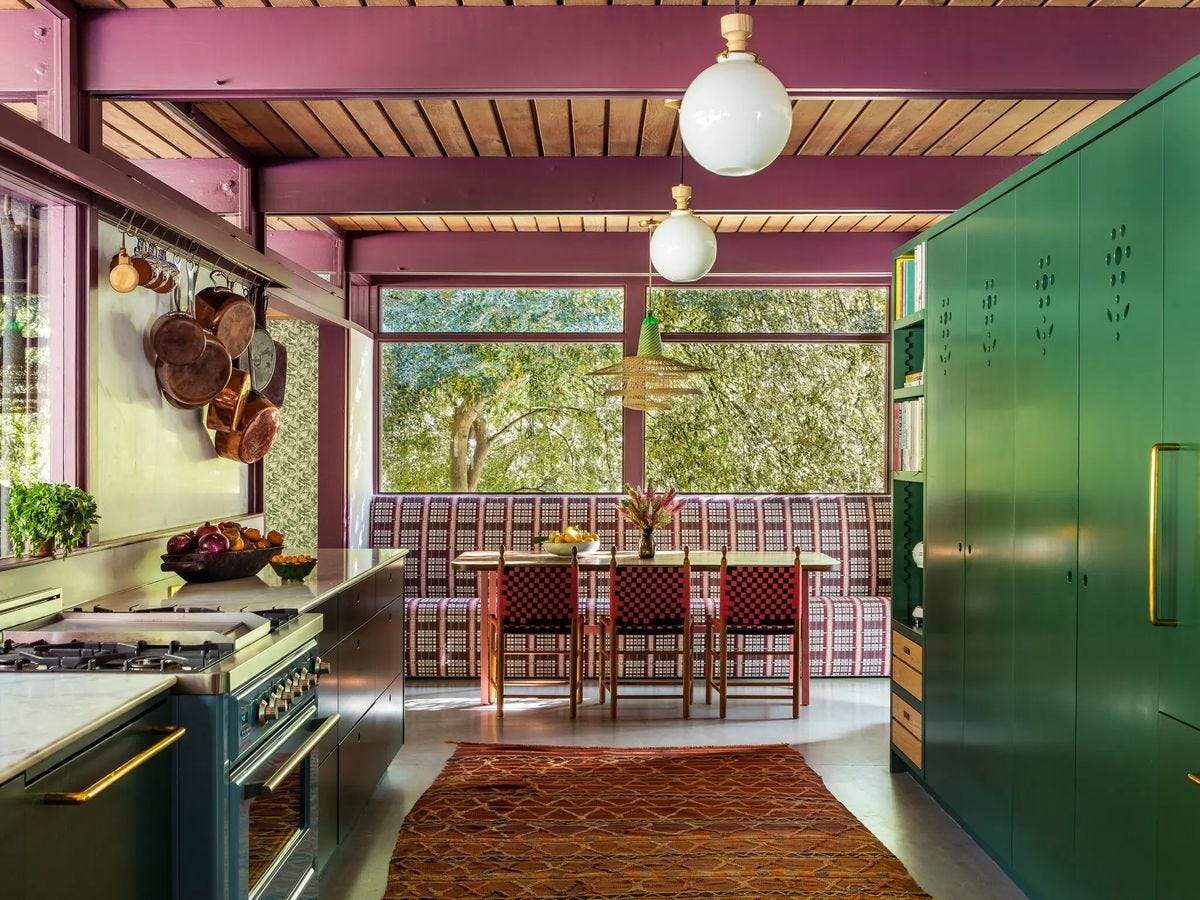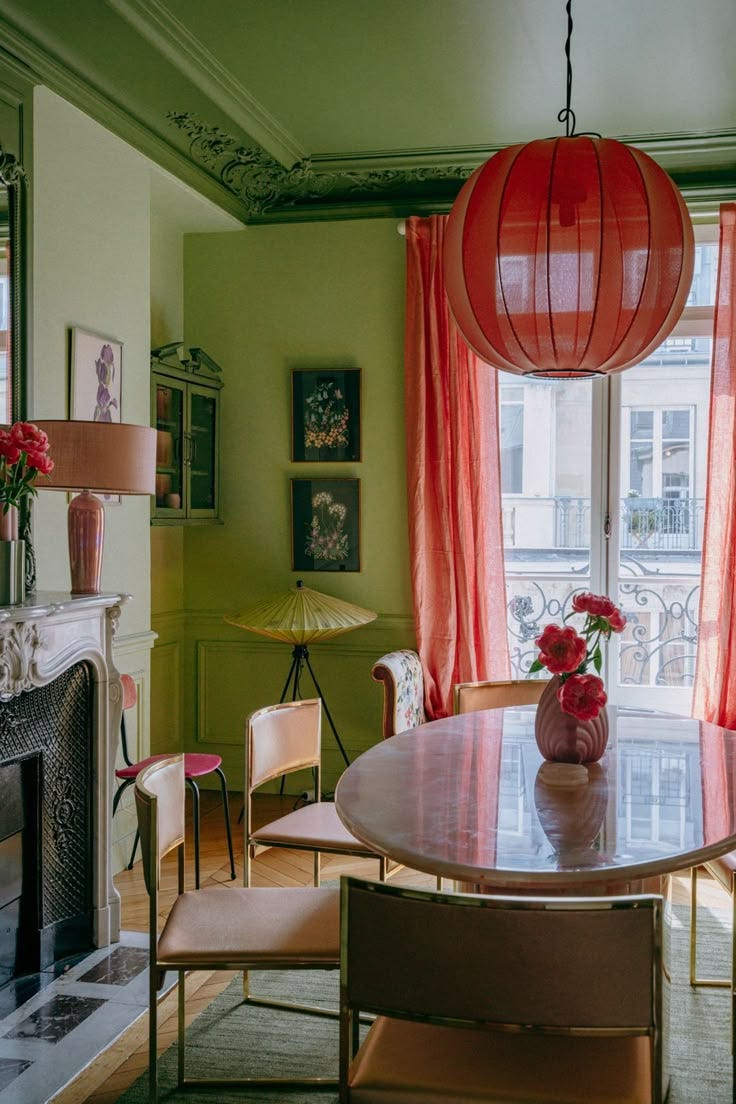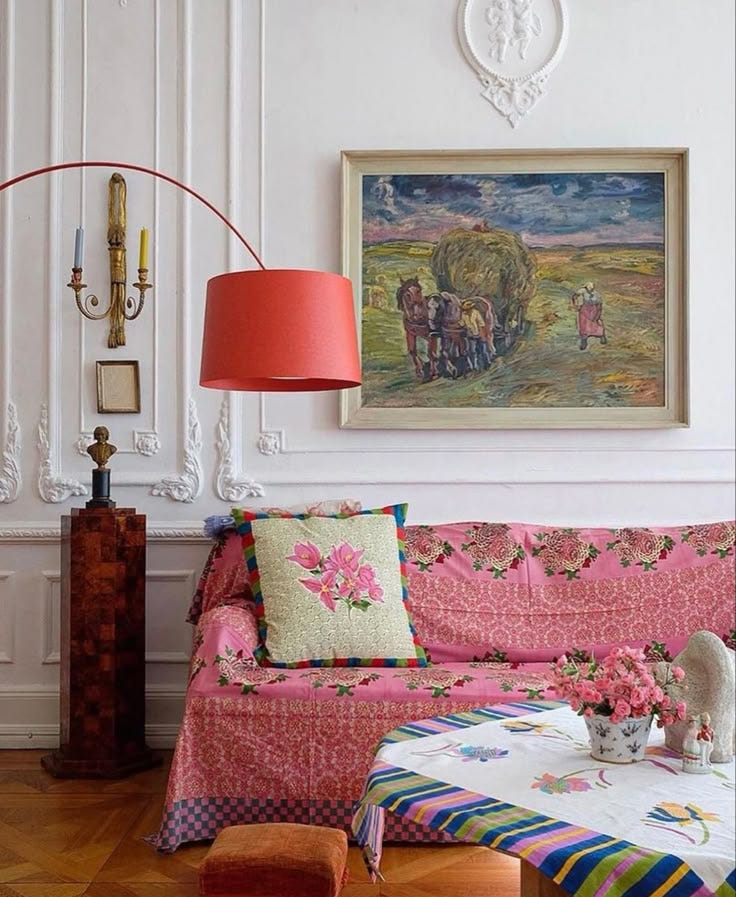A simple shift that makes your home feel intentional
Chances are you have the right stuff, it's just in the wrong place.
Some homes feel effortlessly collected and cool. Others feel like a thrift store. Why is that? It’s more than just the amount of stuff.
I think the problem is balance. Mixing eras when decorating your space isn’t just about throwing old and new together. It’s about contrast and cohesion. Do it right, and your home feels layered, intentional. Do it wrong, and it feels like a storage unit.
I’ve been there.
Maybe you have, too—the room where nothing feels right. It’s a fine line between “eclectic” and “accidental.” But if you think like a collector instead of a decorator, everything shifts.
At least, that’s what has worked for me.

How to think like a collector
A collector doesn’t grab and hoard just anything. They gather and they gather smartly. They also edit. They look for pieces that tell a story and that feel connected in some way—even if they don’t match in the traditional sense.
Your home isn’t a catalog spread. It’s a mix of things you’ve chosen over time. When done right, it doesn’t feel chaotic—it feels personal.
Scale matters, too (but that’s a post for another day). If your couches are comfy and overstuffed, your coffee table should have a presence about it, too—large and in charge. The right proportions make everything feel balanced.
Contrast makes it interesting. Cohesion keeps it from feeling like a mess.
Too much of one thing will feel like a Sears catalogue. A room full of nothing but white walls, glass table tops, and sleek, ultra modern furniture can feel cold. On the other hand, a space with only chunky wooden antiques can look like a museum.
The trick? Contrast.
Try a sculptural, contemporary chair next to a vintage wooden side table. Or armless rattan chairs from the ’70s next to a large-scale, abstract work of art. These are the kinds of pairings that bring a space to life.
But contrast alone isn’t enough. You also need cohesion.

A repeated material can tie things together—maybe it’s warm-toned wood you choose, woven textures, or pops of a certain colour that run through your entire space.
This was an eye-opener for me and when it clicked, everything started to make sense.
Colour is another easy way to connect pieces from different eras. An intricate Victorian mirror and an over-stuffed ’90s couch don’t have much in common—until you paint the walls a deep, olive green and suddenly everything is tied together.
Find the common thread
Not everything needs to match. Really, it’s best if it doesn’t. But everything should have a reason for being there.
A quick note:
Some of ‘Lisa in Colour’ is free to read, but I also publish weekly Friday columns for paid subscribers. If you’re enjoying this read and want to help keep it going, but don’t want to commit to a monthly subscription, you can click here to buy me a coffee. It’s a lovely way to support this little corner of the internet. Either way, I’m so glad you’re here.
Continue reading…
Maybe it’s a shape. A curved oak vintage dresser next to a wrought iron chair? That works. Maybe it’s a texture. A timeworn pink leather sofa with a nubby crimson-and-lime linen throw? I’m into it. Maybe it’s just a feeling you get—pieces that have history, that show signs of life, that all seem to carry a bit of soul.
Still, if something feels out of place, don’t get rid of it right away. Look closer. Could it work in a different room? Could it tie into another piece with the right colour or textile nearby? Sometimes, the problem isn’t what’s there—it’s what’s missing to connect the dots.
I think what’s most important to remember, no matter what stage you’re at in your design journey, is that a collected home doesn’t happen overnight.
You don’t need to fill every space at once. In fact, you shouldn’t. The best homes grow slowly as you find pieces that make sense together—not because they’re part of a trend, or easily accessible at HomeSense or Target.
Forget the idea that everything has to tick a box. Instead, start thinking like a collector. Gather what you love. Find the thread that connects it. And let your space tell a story that only you could write.
Thanks for being here,
Lisa
Some of Lisa in Colour is free, like this column. But I also dive deeper every Friday for paid subscribers. If you’ve enjoyed this read, please consider subscribing here.
Alternatively, if you’d like to toss me some change and buy me a coffee, I am grateful for that, too. It’s a lovely way to support this little corner of the internet. Either way, I’m so glad you’re here.



